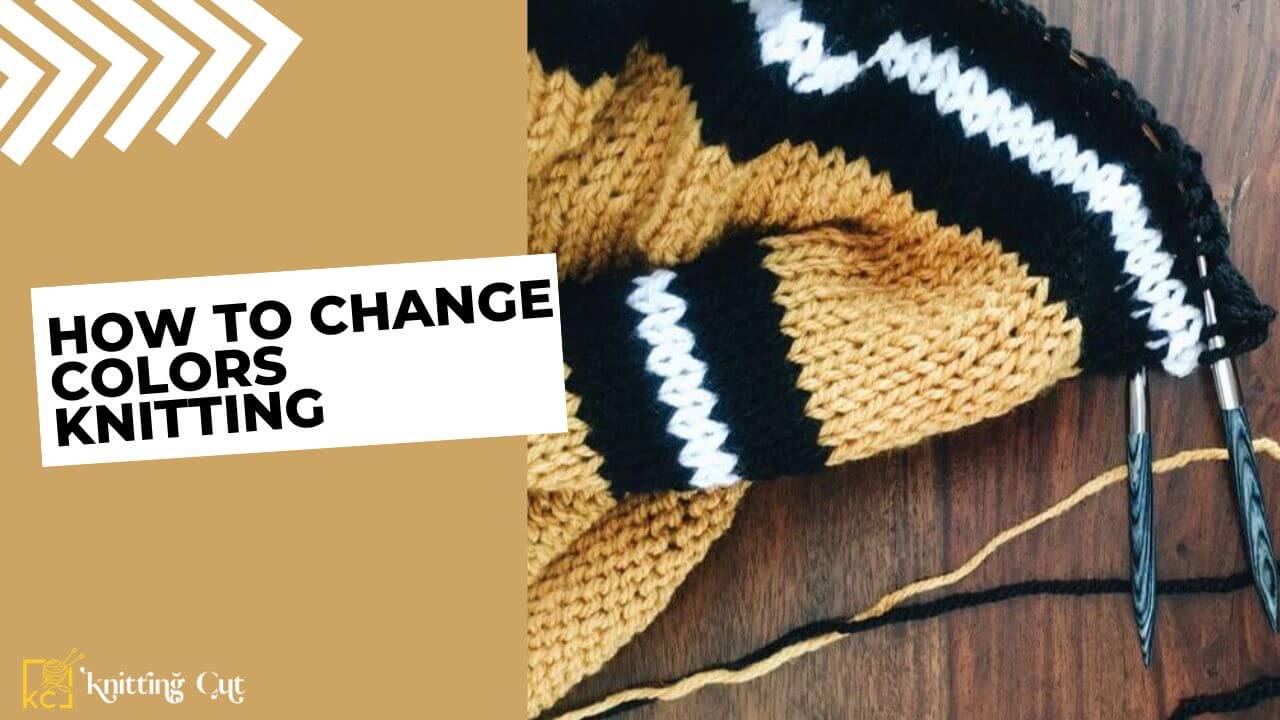Embarking on a colorwork knitting project is both exciting and challenging, especially when it comes to seamlessly changing colors. This tutorial provides a detailed, step-by-step guide on six methods to switch colors, addressing the nuances of different techniques like intarsia, fair isle, stripes, and the varying behaviors of different yarn types.
Step 1: Change Colors Knitting
Before delving into color-changing methods, it’s essential to finish knitting one row and turn your work to the right side. For optimal results, particularly in stitch patterns like garter stitch, ensure the first row with the new color is on the right side. A tutorial on discerning the right side versus the wrong side in knitting is provided for clarity.
Step 2: Overhand Knot Method
- Pick up the new color and tie a simple overhand knot around the tail of the old color.
- Start knitting with the new color in the normal way.
- Upon completing the row, carefully undo the knot.
- Weave in the tail(s) using a sharp tapestry needle.
Note: This method is effective for stripes, entrelac, fair isle, mosaic knitting, or any colorwork project where full rows are knit in a given color. Not suitable for intarsia or patterns knit in the round.
Step 3: Weave In As You Go
Another versatile method is weaving in ends as you knit, suitable for projects in the round, especially stripes. This method eliminates the need to weave in tails later and is recommended for slightly fuzzy and feltable fibers.
Step 4: Twist and Weave
- This method provides a seamless transition without holes and is suitable for intarsia projects.
- Weave in ends later or as you go if the yarn allows (preferably fuzzier yarn).
- While versatile and neat, it requires weaving in both tails simultaneously.
Step 5: Weave In and Twist
- Developed to address holes in intarsia projects.
- Creates an anchor for both new and old color tails.
- Allows weaving in the tails as you go.
- Suitable for intarsia and projects knit in the round.
Step 6: The Back Join
- Ideal for joining colors precisely in non-intarsia projects.
- Requires a needle or paper clip.
- Suitable for almost any colorwork technique except Intarsia.
- Excellent for reversible projects; no knots or visible tails.
Step 7: Alternating Stitches
- Useful for blending two different hues seamlessly.
- Suitable for projects with potentially clashing colors or different yarn bases.
- Particularly effective for novelty or handspun yarns.
Note: Each method is recommended for specific projects and yarn types, offering knitters a range of options to choose from based on their preferences and the characteristics of their project.
Color Changing in the Round:
When knitting in the round, techniques like “Weave In As You Go” are highly effective. For intarsia in the round, the “Weave In & Twist” method is recommended.
Conclusion:
Experiment with these techniques to discover what works best for your project and yarn type. Changing colors in knitting can be a rewarding process, and with the right method, you can achieve seamless transitions and enhance the overall quality of your colorwork projects.
Read More: How to Start Off Knitting
